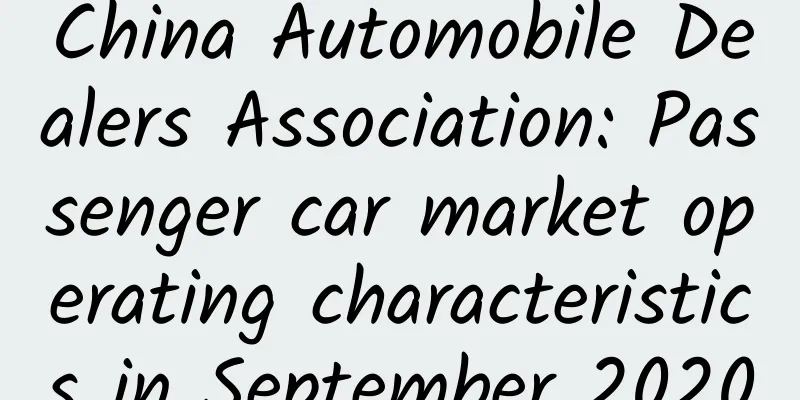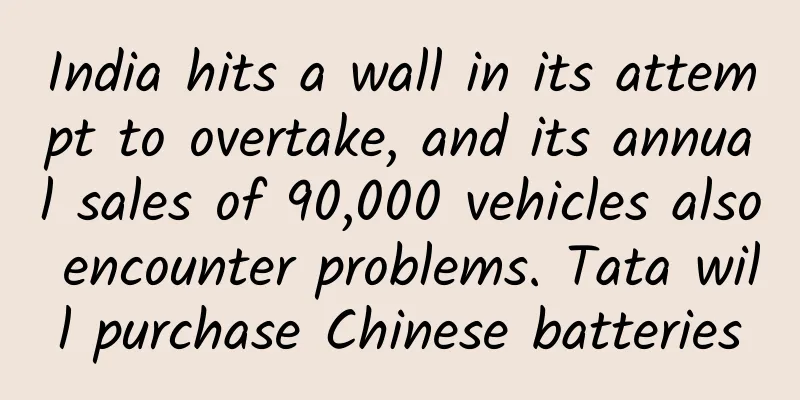China Automobile Dealers Association: Passenger car market operating characteristics in September 2020

|
1. Recent trends in narrow passenger car retail sales The growth rate of the national passenger car market from July to September this year has maintained a strong momentum. This is firstly due to the unexpected recovery of the macro economy and export market, especially the strong performance of Chinese exports under the background of the epidemic in Europe and the United States, which has stabilized consumer confidence. Secondly, it is promoted by the special factors of the low base of the auto market caused by the implementation of National VI in July last year in some regions. Thirdly, the obvious doubling recovery trend of new energy vehicle retail sales has driven the auto market to strengthen. Considering that the Mid-Autumn Festival was moved to October this year, the retail sales in September increased by 12.2% compared with August, which is not high compared with the average month-on-month growth rate of 15% in previous years. The main reason is that the autumn car buying trend driven by the Chengdu Auto Show started early, and the waiting phenomenon of new products caused by the Beijing Auto Show was not obvious. The auto market maintained a strong atmosphere of hot growth in September. The demand for car purchases before the start of the school season under the background of the global epidemic is a rigid demand for safe travel. Therefore, the consumption demand before the double holidays in September is difficult to resist the pull of the school season. Since the outbreak of the epidemic at the beginning of this year, the growth rate of the auto market from January to September was -20%, -78%, -40%, -3%, 2%, -6%, 8%, 9%, and 7%. The rebound after the epidemic was strong. The recent month-on-month growth rate from April to September has stabilized, which means that the good trend of a V-shaped recovery from the bottom since the epidemic has been confirmed. From January to September 2020, the national passenger car market had a cumulative retail sales of 12.93 million vehicles, a year-on-year cumulative decrease of 12.5%. The cumulative sales this year decreased by 1.89 million vehicles year-on-year, accounting for about 9 percentage points of last year's total retail sales. The decline in retail sales this year was mainly due to the early Spring Festival and the epidemic, which affected 2.08 million vehicles in the first quarter. In the second quarter, the year-on-year loss in retail sales was only 170,000 vehicles, and there was an increase of 380,000 vehicles in July-September of the third quarter. 2. The wholesale trend of narrow passenger vehicles in recent years. In September, the wholesale sales of manufacturers reached 2.06 million vehicles, up 8.5% year-on-year and 19% month-on-month. The cumulative wholesale sales from January to September reached 13.1 million vehicles, down 12.5% year-on-year, or 1.92 million vehicles. This year's holiday caused losses to the sales of manufacturers in August, so the manufacturers' wholesale stocks were replenished normally in September during the National Day and Mid-Autumn Festival. From January to September, the cumulative wholesale sales volume was 13.1 million vehicles, a year-on-year decrease of 12.5%, a decrease of 2.04 million vehicles. 3. Production trends of narrow passenger vehicles in recent years. In September, passenger car production was 2.01 million, up 10% year-on-year from September 2019; from January to September, a total of 12.83 million vehicles were produced, down 12.5% year-on-year, with a decrease of 1.88 million vehicles. In September, luxury car production increased by 35% year-on-year, joint venture brands increased by 6% year-on-year, and domestic brands increased by 8% year-on-year. From January to September, the cumulative production was 12.81 million vehicles, a year-on-year decrease of 12.5%, and the output decreased by 1.88 million vehicles. 4. Monthly changes in production and sales inventory At the end of September, the manufacturer's inventory decreased by 52,000 vehicles, and the channel inventory increased by 82,000 vehicles. The channel inventory decreased by 220,000 vehicles from January to September. The dealer inventory continued to be replenished slightly from April to August, and the replenishment in September was similar to that in previous years. As dealer inventories were relatively low from January to September, manufacturers worked hard to make up for the losses caused by the epidemic, and the results of resuming production and work were outstanding, so terminal inventories were reasonably replenished. 5. Narrow Passenger Car Price Trend Characteristics The price trend of the passenger car market in 2020 was generally stable, and there was no obvious increase in promotions in the entire car market. The entire car market was frozen in January and February due to the epidemic. After being frozen in March to May, the market recovered and continued to maintain its original operating characteristics. There was neither explosive promotion growth nor a sharp contraction in promotions due to supply exceeding demand. From June to September, car market promotions gradually increased, and there were also certain new products launched, so the increase in price promotions was not large. 6. Growth characteristics of each level of narrow passenger vehicles In September, SUV retail sales increased by 8% year-on-year, among which B-class SUV increased by 40% and A-class SUV increased by 8% compared with September last year. Joint venture SUVs such as Volkswagen were strong, and independent SUVs such as Changan and Great Wall performed outstandingly. 7. Narrow passenger car growth characteristics by country In September, the retail sales increased by 7% year-on-year. The performance of each joint venture car series was differentiated, and the wholesale performance of Japanese cars was excellent. In terms of retail sales, Japanese, American and German cars performed relatively well. Japanese main brands strengthened across the board. Japanese brands had a retail share of 24.5%, lower than the 26% share of German brands; American brands had a strong share of 10.0%, an increase of 1.4 percentage points year-on-year. 8. The epidemic is not a tool to defeat autonomy Every time after a market downturn, domestic brands are the first to rebound. Domestic brands also performed strongly in 2009 and 2016, but after this epidemic, domestic brands fell into a slump. In September, the retail performance of major independent manufacturers was strong. However, the differentiation is serious. The epidemic is not a knockout game, and the independent manufacturers cannot be defeated by the epidemic. In September 2020, the share of domestic brands was 33.6%, which was a significant decline compared with the previous years. The share returned to the bottom, the worst level. Since September 2018, the share of domestic brands has dropped significantly year-on-year for 20 consecutive months. The decline rate of the full-year share in 2019 was still relatively large. The share of domestic brands rebounded in February and March under the epidemic in 2020. Then it dropped significantly. The market rescue policy was introduced in April, which benefited the industry. The independent car market started to decline sharply from April to June, because the joint venture and luxury car markets recovered faster. 9. Brand production and sales characteristics in September 2020 The differentiation trend among automakers is intensifying. The growth dividend of SUVs no longer exists. The high growth of the new energy market is gradually cooling down. Joint ventures are moving down to the entry-level market. The competition for existing stocks is fierce, and the market share of domestic brands is gradually being squeezed. The scale of most companies continues to be below the break-even point. It is expected that some companies will gradually deepen the strategy of streamlining models and integrating platforms to optimize costs. Luxury car retail sales in September increased by 32% year-on-year and 3% month-on-month from July, with a market share of 15%, a record high. The high-end replacement demand brought by consumption upgrades and the price advantage brought by the promotional discounts of luxury models have quickly led to a recovery in the market segment. Among them, the top three luxury brands in 2020 accounted for 10.7%, an increase of 5 percentage points from 2017, and other second-tier luxury brands accounted for 3.2%, an increase of 1.5 percentage points from 2017. In September, retail sales of mainstream joint venture brands increased by 6% year-on-year and 6% month-on-month from July; among them, the top ten joint ventures in 2020 had a share of 48.6%, an increase of 4.2 percentage points from 2017, and other second-tier joint venture brands had a share of 3.5%, a decrease of 3 percentage points from 2017. Domestic brands are still under great pressure overall, with retail sales in September up 4% year-on-year and 7% month-on-month from July, and a market share of 33%, up 2% from July. The top ten domestic brands in 2020 had a share of 28.6%, down 1.3 percentage points from 2017, and other second-tier domestic brands had a share of 5.4%, down 6.5 percentage points from 2017. 10. Comparison of trends between new energy and traditional vehicles In September, the wholesale sales of new energy passenger vehicles exceeded 124,000 units, a year-on-year increase of 99.6% and a month-on-month increase of 24% from August. Among them, the sales of plug-in hybrid vehicles were 22,000 units, a year-on-year increase of 55%. The wholesale sales of pure electric vehicles were 102,000 units, a year-on-year increase of 105%. In September, the strong growth trend of electric vehicles at both ends was obvious, among which the sales of A00-class vehicles were 32,500, and the share increased to 32% of pure electric vehicles. In September, the new energy vehicle market was diversified, with SAIC-GM-Wuling 24,386 units, BYD 19,048 units, and Tesla China 11,329 units, ranking the top three in new energy. New forces such as Weilai, Xiaopeng, Weimar, Hozon, and Leapmotor are excellent. GAC New Energy and others also had high growth, and the differentiation of new energy performance of large groups intensified. In September, the wholesale of ordinary hybrid passenger vehicles was 33,700 units, a year-on-year increase of 17% from September last year. |
Recommend
【Latest】Baidu incentive video product introduction and delivery skills
Today I would like to introduce Baidu Incentive V...
WeChat always takes up a lot of memory. Don't clean it up randomly. These four tips are the most practical.
The most painful thing is that WeChat records can...
How hard-working are the people of Huizhou in "Ming Dynasty Under the Microscope"?
Recently, a popular TV series "Ming Dynasty ...
The tragedy of Lenovo: Why did it fail miserably in the mobile phone market despite owning Motorola?
For Lenovo, a long-established company, there wer...
Massive advertising strategy in the cosmetics industry!
A large customer base is a prerequisite for the r...
Honda's global electrification business will accelerate in 2024 ~ Electrification business initiatives and investment strategies
On May 16, 2024, Honda held a press conference ma...
Esquire Bluetooth speaker costs 1530 yuan and has a built-in conference call system
[September 10 news] Recently, Harman Kardon launch...
Should I extract teeth to correct my teeth?
Many people who are planning to have their teeth ...
Is it worth buying a BMW just to save a few thousand bucks?
According to official news from BMW Brilliance, f...
4 channels and strategies for acquiring traffic!
Introduction : In an era of traffic shortage, the...
On par with Bosch, Huawei empowers car manufacturers to build better cars. How many cards does Huawei, which does not make cars, have hidden?
One poster set off the entire automotive industry...
Is there any connection between periodontitis and bad breath?
Bad breath has always been a health problem that ...
Tesla fatal car accident investigation in California: Driver speeding and ignoring warnings
According to Reuters, the National Transportation...
Is a 2K screen mobile phone worth buying?
Since the first vivo Xplay 3S was launched at the...









